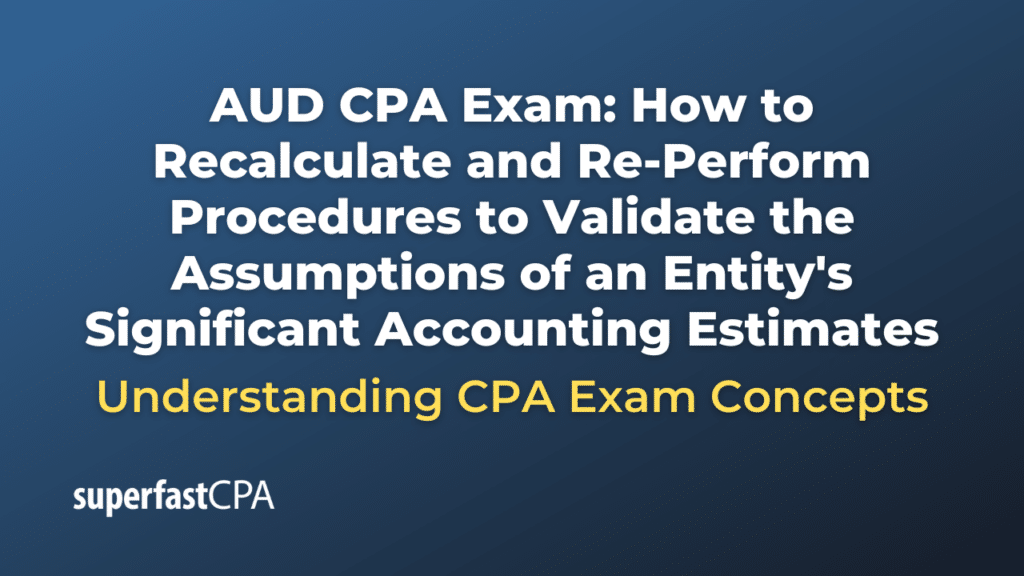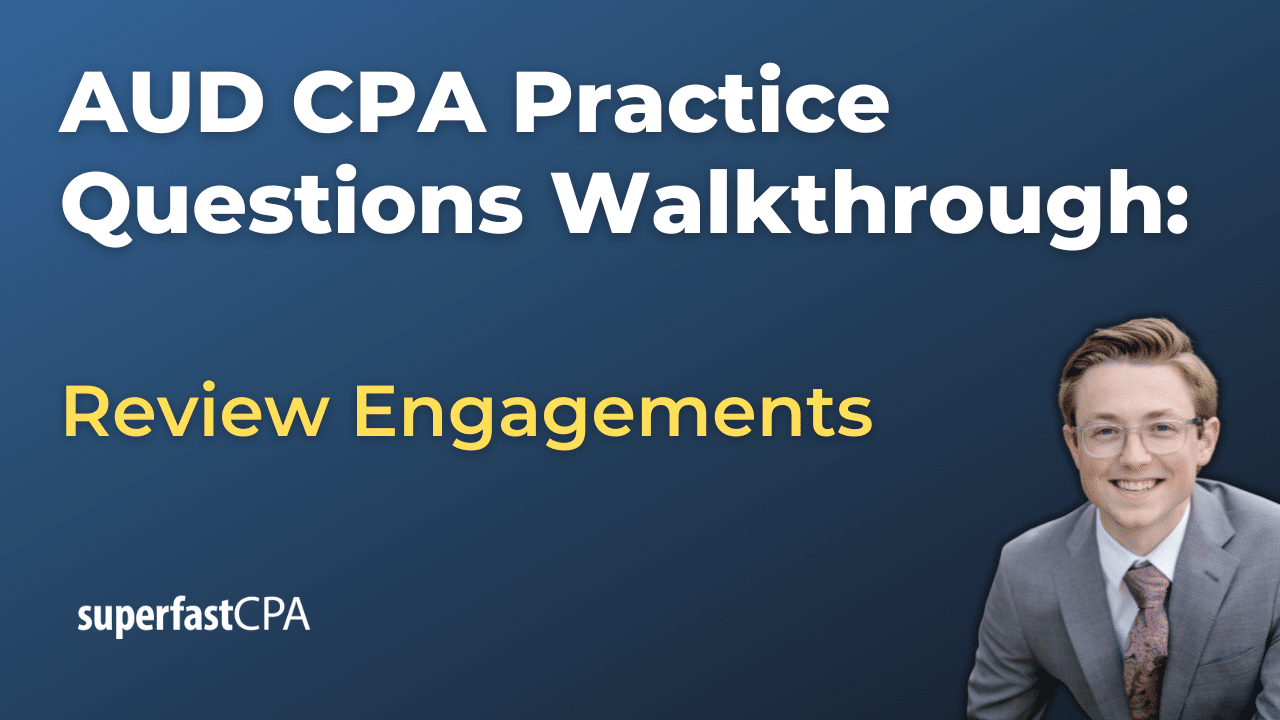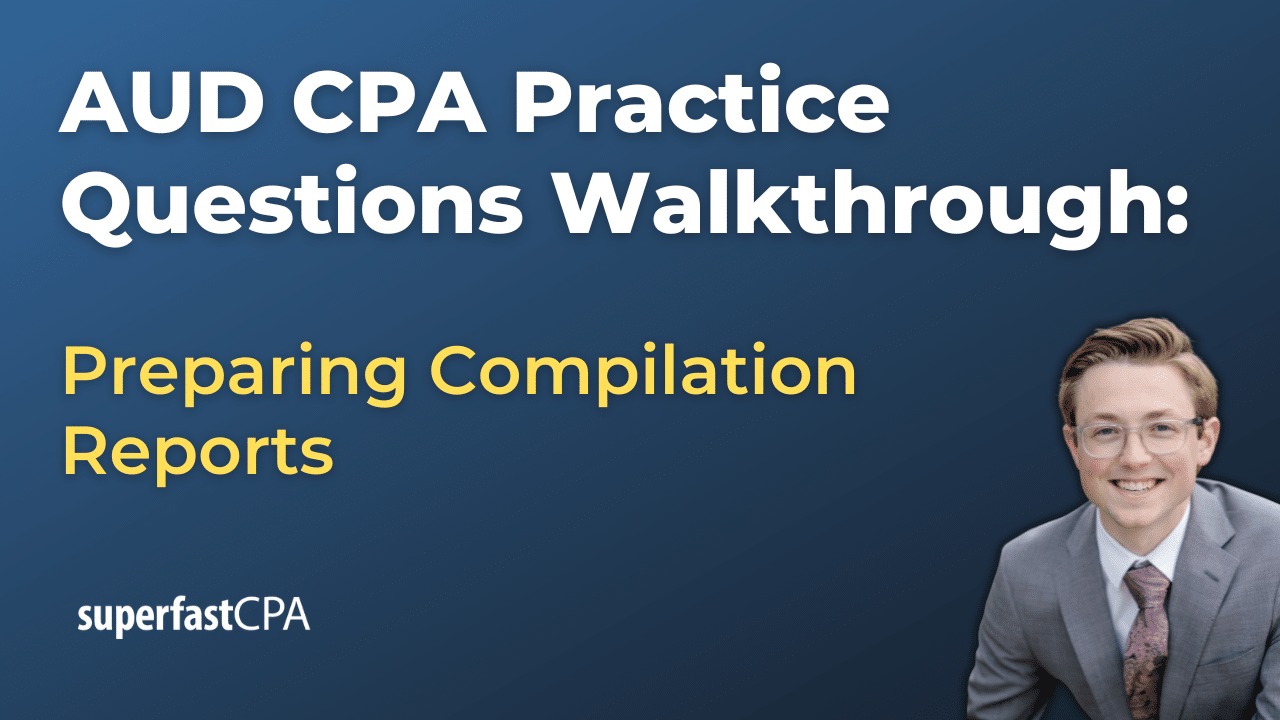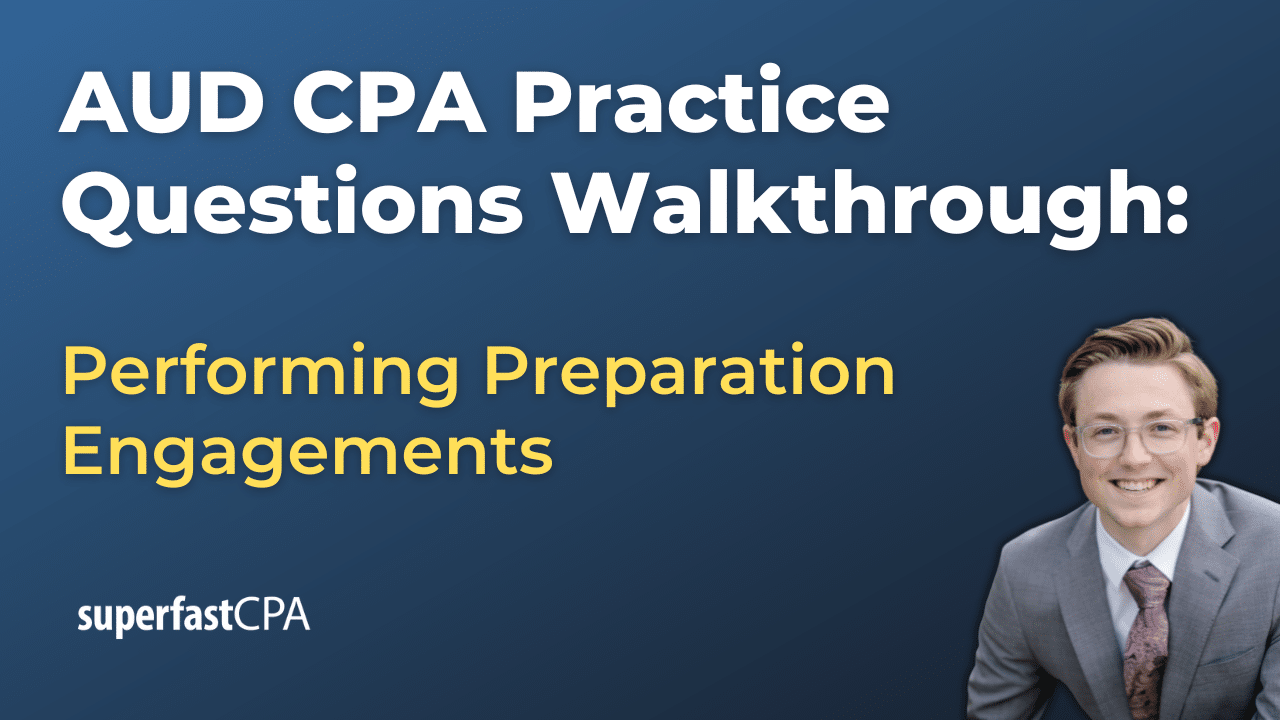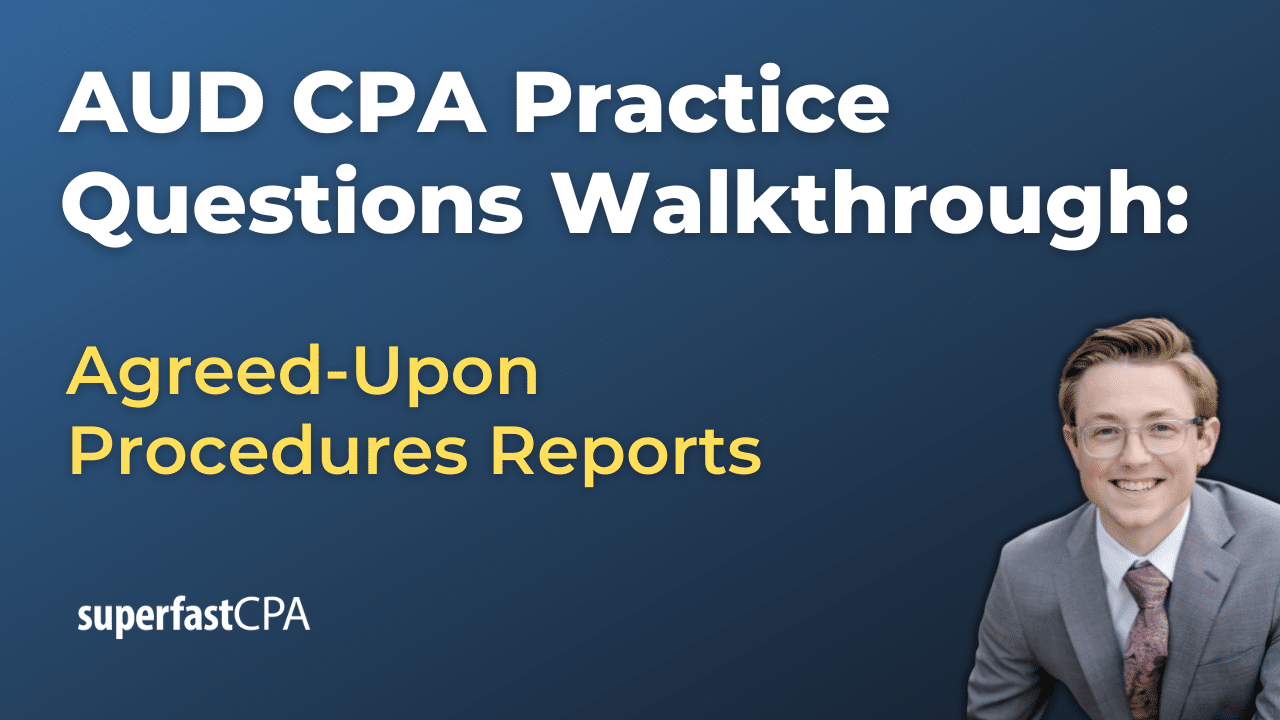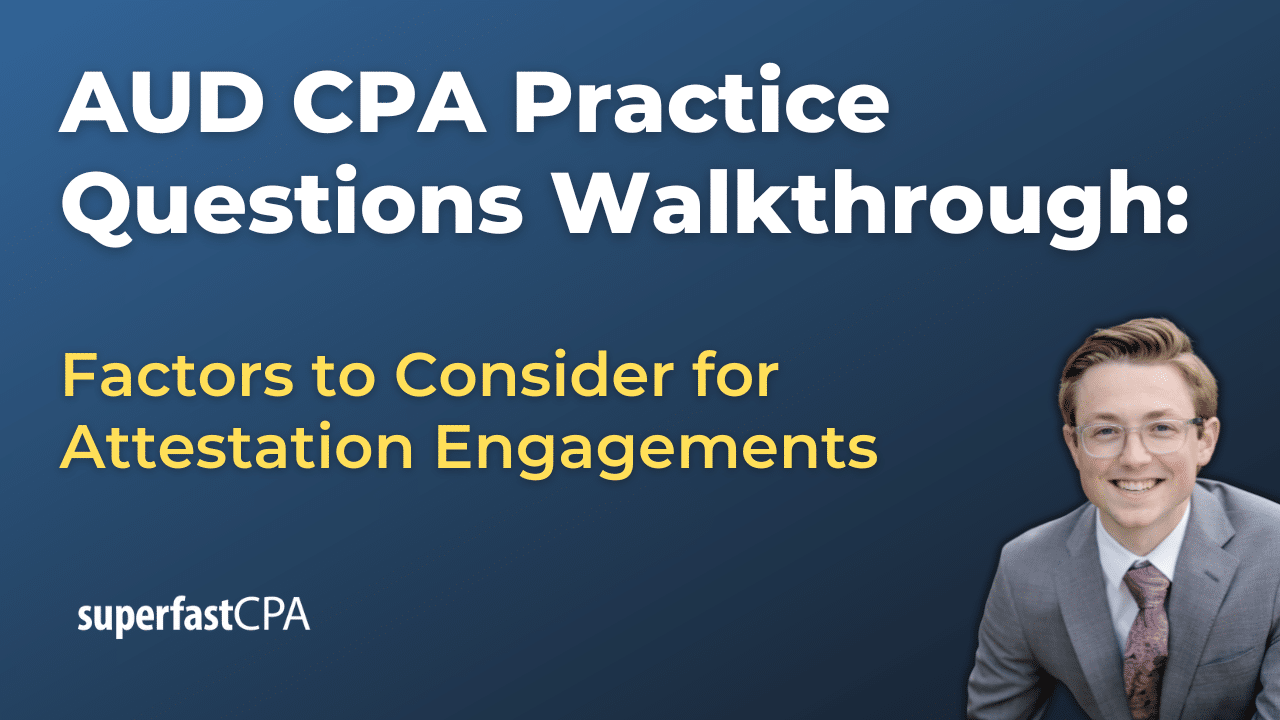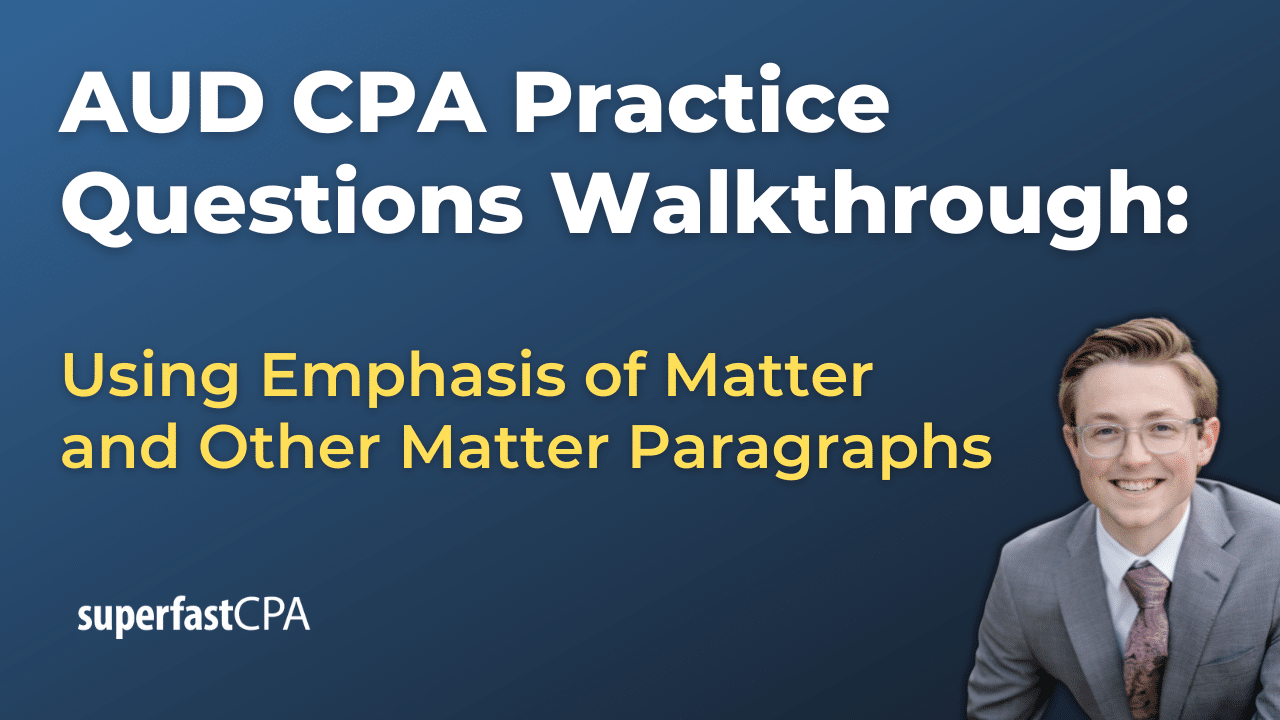Introduction
Overview of Significant Accounting Estimates
Definition and Importance in Financial Reporting
In this article, we’ll cover how to recalculate and re-perform procedures to validate the assumptions of an entity’s significant accounting estimates. Significant accounting estimates are crucial elements in financial reporting that involve a high degree of judgment and uncertainty. These estimates are made by management to predict future outcomes and reflect these predictions in the financial statements. Because these estimates often involve assumptions about future events and the use of complex models, they are inherently subject to uncertainty and risk. The accuracy of these estimates can significantly impact the financial statements, influencing stakeholders’ decisions, including investors, creditors, and regulators.
Accounting estimates play a vital role in presenting a fair and accurate picture of a company’s financial position. For example, when management estimates the useful life of an asset for depreciation purposes, it directly affects the company’s reported net income. Similarly, estimates related to the allowance for doubtful accounts impact the reported accounts receivable and bad debt expense. These estimates ensure that the financial statements reflect the economic reality of the entity, even in the face of uncertainty.
Examples of Common Significant Accounting Estimates
There are several types of significant accounting estimates that auditors commonly encounter. Some of the most prevalent include:
- Allowances for Doubtful Accounts: This estimate determines the amount of receivables that are expected to be uncollectible, directly affecting the valuation of accounts receivable and bad debt expense.
- Depreciation Methods: Management must estimate the useful life and residual value of fixed assets, which influences the calculation of depreciation expense and, ultimately, the carrying amount of the assets on the balance sheet.
- Fair Value Measurements: For assets or liabilities measured at fair value, such as investments or derivatives, management must estimate market conditions and relevant pricing models to determine the appropriate valuation.
- Warranty Liabilities: Estimating the cost of future warranty claims impacts both the liabilities recorded on the balance sheet and the expenses recognized in the income statement.
Each of these estimates requires careful consideration of various factors, including historical data, current market conditions, and future expectations.
Purpose of Recalculating and Re-Performing Procedures
Importance in Ensuring the Accuracy and Reliability of Financial Statements
The process of recalculating and re-performing procedures is essential in auditing because it helps ensure the accuracy and reliability of significant accounting estimates. Given the inherent subjectivity and uncertainty involved in these estimates, there is a risk that they may not be accurate or could be biased by management. By independently recalculating the estimates and re-performing key procedures, auditors can verify that the methods and assumptions used by management are reasonable and consistent with applicable accounting standards.
Recalculation and re-performance are particularly important in areas where the estimates have a material impact on the financial statements. These procedures help to mitigate the risk of material misstatement, providing assurance that the financial statements give a true and fair view of the entity’s financial position and performance.
The Auditor’s Responsibility in Validating Assumptions
Auditors have a critical responsibility to validate the assumptions underlying significant accounting estimates. This involves not only verifying the mathematical accuracy of the estimates but also evaluating the reasonableness of the assumptions used by management. Auditors must apply professional skepticism, questioning whether the assumptions are supported by evidence and whether they align with the entity’s historical experience and external economic conditions.
The validation process includes reviewing the models and methods used to develop the estimates, assessing the consistency of assumptions with other relevant information, and considering the potential for management bias. By fulfilling this responsibility, auditors help ensure that the financial statements are free from material misstatement, thereby protecting the interests of stakeholders who rely on these statements for decision-making.
Understanding the Nature of Significant Accounting Estimates
Characteristics of Significant Accounting Estimates
High Degree of Estimation Uncertainty
Significant accounting estimates are inherently uncertain because they involve predicting future events or outcomes that are often difficult to foresee with precision. This uncertainty arises from various factors, including economic conditions, market trends, and the specific circumstances of the entity. For instance, estimating the future collectability of receivables or the useful life of an asset requires assumptions about factors that may change over time, such as customer payment behavior or technological advancements. The high degree of estimation uncertainty means that even small changes in assumptions can lead to significant variations in the reported amounts, making it crucial for auditors to carefully evaluate these estimates.
Subjectivity Involved in Selecting Assumptions
The process of making significant accounting estimates often requires a substantial amount of judgment and subjectivity. Management must choose among various potential assumptions, such as expected future cash flows, discount rates, or useful lives of assets. The subjectivity involved in selecting these assumptions introduces the possibility of different outcomes depending on the choices made. For example, management might select assumptions that are overly optimistic or conservative, depending on their perspective or intentions. This subjectivity is why auditors must thoroughly review the rationale behind the assumptions and ensure they are reasonable and supportable.
Common Sources of Risk
Potential for Management Bias
One of the primary risks associated with significant accounting estimates is the potential for management bias. Since estimates can significantly impact financial results, there may be an incentive for management to manipulate assumptions to achieve desired financial outcomes. This could involve overly optimistic revenue forecasts, aggressive depreciation methods, or underestimating liabilities. Management bias can lead to material misstatements in the financial statements, making it a critical area for auditors to address. Auditors must approach these estimates with professional skepticism, actively seeking evidence that supports or refutes the assumptions used by management.
Complexity and Variability of Assumptions
The assumptions underlying significant accounting estimates can be highly complex and variable, further increasing the risk of misstatement. Complex models may involve multiple interrelated assumptions, such as in fair value measurements or pension obligations, where small changes in one assumption can have a cascading effect on the overall estimate. Additionally, the variability of assumptions over time, such as fluctuating market conditions or changes in industry practices, can make it challenging to develop reliable estimates. Auditors must not only understand the complexity of these models but also evaluate whether the assumptions used are consistent with current and anticipated conditions.
Regulatory and Professional Standards
Overview of Relevant Auditing Standards
The auditing of significant accounting estimates is governed by various regulatory and professional standards designed to ensure that these estimates are accurate and free from material misstatement. Key standards include:
- AS 2501: Auditing Accounting Estimates (PCAOB Standard) – This standard provides guidance on the auditor’s responsibilities when auditing accounting estimates, including assessing the reasonableness of assumptions, understanding the methods used by management, and evaluating the consistency of estimates with the entity’s historical experience and external factors.
- ISA 540: Auditing Accounting Estimates and Related Disclosures (International Standard on Auditing) – ISA 540 outlines the auditor’s obligations in auditing accounting estimates, focusing on obtaining sufficient appropriate audit evidence regarding the reasonableness of estimates and their disclosures. The standard emphasizes the importance of understanding the nature and complexity of the estimates, as well as the need to evaluate the appropriateness of management’s judgments.
These standards emphasize the auditor’s role in critically evaluating significant accounting estimates, ensuring that the assumptions and methodologies used by management are reasonable and supported by evidence. They also highlight the need for auditors to document their findings and the rationale for their conclusions, providing a clear trail of the audit process. Understanding and applying these standards is essential for auditors to effectively address the risks associated with significant accounting estimates and to provide assurance that the financial statements are fairly presented.
Identifying and Assessing the Assumptions Used by Management
Types of Assumptions
Key Variables That Influence Estimates
When evaluating significant accounting estimates, it is essential to identify the key variables that influence these estimates. These variables typically include:
- Economic Conditions: The broader economic environment can significantly impact accounting estimates. For instance, interest rates, inflation, and GDP growth are crucial factors in estimates related to pension obligations, fair value measurements, and long-term asset valuations. Understanding the current and projected economic conditions helps auditors assess whether the assumptions used by management are realistic.
- Historical Data: Management often relies on historical data to inform their estimates. This can include past performance, trends in customer behavior, or historical cost patterns. While historical data provides a foundation, it is crucial to consider whether past conditions are likely to persist in the future or if adjustments are necessary due to changing circumstances.
- Industry Trends: Industry-specific factors, such as technological advancements, regulatory changes, or competitive dynamics, can also influence accounting estimates. For example, in industries with rapid technological innovation, estimates related to asset useful lives may need to be shorter than in more stable industries. Auditors must be aware of these trends to assess the appropriateness of the assumptions used.
Evaluating the Reasonableness of Assumptions
Criteria for Assessing Assumptions
To evaluate the reasonableness of the assumptions used by management, auditors must apply specific criteria:
- Consistency with External Sources: One of the primary methods for assessing the reasonableness of assumptions is to compare them with external sources of information. For example, assumptions about future interest rates should be consistent with market forecasts and economic reports. Discrepancies between management’s assumptions and external data should be carefully investigated.
- Consistency with Past Performance: Assumptions should also be evaluated against the entity’s historical performance. If management’s assumptions deviate significantly from past trends without a clear and justified reason, this may indicate that the assumptions are overly optimistic or conservative. For instance, if a company has historically had a certain level of bad debts, a sudden change in the allowance for doubtful accounts should be scrutinized.
- Internal Consistency: Assumptions should be internally consistent across different areas of the financial statements. For example, if an entity projects strong future growth in sales, this should be reflected in related estimates, such as inventory levels and production costs. Inconsistencies may suggest that the assumptions have not been fully considered or that there may be an error in the estimation process.
Techniques for Identifying Unreasonable Assumptions
Analytical Procedures
Analytical procedures are a powerful tool for identifying unreasonable assumptions. By comparing the relationships between financial and non-financial data, auditors can detect anomalies or trends that may indicate problematic assumptions. For example, if management assumes a significant increase in sales without a corresponding increase in marketing expenses or production capacity, this could suggest that the sales estimate is unrealistic.
- Ratio Analysis: Auditors can use ratio analysis to assess the reasonableness of assumptions. For instance, comparing current year ratios, such as the gross profit margin or return on assets, with prior years or industry averages can highlight discrepancies that warrant further investigation.
- Trend Analysis: Analyzing trends over time can also provide insights into the reasonableness of assumptions. If an entity’s revenue has been declining for several years, but management assumes a sudden reversal, this assumption should be carefully evaluated.
Industry Benchmarking
Industry benchmarking involves comparing the entity’s assumptions and estimates with those of similar companies in the same industry. This technique is particularly useful for identifying outliers or unusual assumptions that may not be reasonable.
- Comparative Analysis: By examining the financial statements and disclosures of peer companies, auditors can identify whether the entity’s assumptions are in line with industry norms. For example, if most companies in an industry are adopting conservative estimates for future growth due to economic uncertainty, but the entity is projecting aggressive growth, this assumption should be questioned.
- Industry Reports: Industry reports and market analyses provide valuable context for assessing assumptions. These reports often include industry forecasts, trends, and challenges that can help auditors determine whether the entity’s assumptions are reasonable given the current industry environment.
Using these techniques, auditors can systematically identify and assess the assumptions used by management, ensuring that they are both reasonable and supported by evidence. This process is critical to the overall accuracy of significant accounting estimates and, by extension, the reliability of the financial statements.
Recalculating the Entity’s Significant Accounting Estimates
Step-by-Step Guide to Recalculation
Gathering Relevant Data and Inputs
The first step in recalculating an entity’s significant accounting estimates is to gather all relevant data and inputs used by management in their original calculations. This includes:
- Source Documents: Collect original source documents such as contracts, invoices, market reports, and historical financial data that management relied upon.
- Management’s Assumptions: Obtain detailed information on the specific assumptions used by management, including the rationale behind their selection.
- Supporting Calculations: Review any supporting calculations, spreadsheets, or models that management used to arrive at their estimates.
This information provides the foundation for the recalculation process, ensuring that the auditor uses the same data and assumptions as management.
Performing the Recalculation Using the Same Assumptions as Management
Once all relevant data and inputs have been gathered, the auditor performs the recalculation using the same assumptions as management. The steps involved in this process include:
- Replicating Management’s Calculation: Use the same methodology and assumptions that management used to develop their estimate. This might involve applying the same formulas, discount rates, growth projections, or other variables.
- Verification of Mathematical Accuracy: Carefully check the mathematical accuracy of the calculations. This includes verifying that all formulas are correctly applied and that there are no errors in the computation process.
- Consistency Check: Ensure that the assumptions are consistently applied throughout the calculation. For example, if a certain growth rate is used in one part of the estimate, it should be consistently applied across all relevant areas.
By closely following the same process as management, the auditor can identify any discrepancies that may have arisen due to errors or inconsistencies in the original calculations.
Comparing Recalculated Results with Management’s Estimates
After performing the recalculation, the next step is to compare the auditor’s results with the estimates provided by management. This comparison involves:
- Identifying Differences: Highlight any differences between the recalculated figures and those provided by management. Differences might arise from mathematical errors, incorrect application of assumptions, or differences in data interpretation.
- Analyzing Variances: For any significant differences identified, analyze the potential reasons. This may involve questioning whether the assumptions were appropriately applied or whether there might be an error in the original calculation.
- Discussing Findings with Management: If material differences are found, it is essential to discuss these with management to understand their perspective and obtain explanations or corrections if necessary.
This comparison step is critical in ensuring that the estimates presented in the financial statements are accurate and free from material misstatements.
Tools and Techniques
Use of Spreadsheet Software or Specialized Audit Tools
Recalculating significant accounting estimates often requires the use of various tools and techniques to ensure accuracy and efficiency:
- Spreadsheet Software: Tools like Microsoft Excel are commonly used for recalculating estimates. Auditors can set up formulas, perform complex calculations, and create models that mirror those used by management. Excel’s capabilities for data analysis and visualization can also aid in understanding and presenting findings.
- Specialized Audit Tools: In some cases, more sophisticated audit software may be necessary. Tools like IDEA, ACL, or proprietary audit platforms can be used to handle large datasets, perform advanced analytics, and automate portions of the recalculation process. These tools are especially useful when dealing with complex estimates that involve multiple variables and data sources.
Using the right tools enhances the accuracy and efficiency of the recalculation process, allowing auditors to focus on areas of higher risk or complexity.
Documenting the Recalculation Process
How to Maintain Thorough and Accurate Documentation
Documenting the recalculation process is a vital part of the audit procedure, as it provides a clear record of the steps taken and supports the auditor’s conclusions. Key aspects of effective documentation include:
- Detailed Workpapers: Maintain comprehensive workpapers that include all data and assumptions used, as well as the recalculation process. These workpapers should clearly show how the auditor arrived at their results, including any intermediate steps or adjustments made.
- Reconciliation Statements: Prepare reconciliation statements that compare the auditor’s recalculated estimates with those of management. These statements should highlight any differences and provide explanations for variances.
- Supporting Evidence: Attach copies of all supporting documents, such as source data, calculations, and relevant external information (e.g., market reports) to the workpapers. This ensures that anyone reviewing the audit can follow the process and verify the accuracy of the recalculation.
- Audit Trail: Ensure that there is a clear audit trail from the initial data collection to the final recalculated figures. This trail should be logically organized and easy to follow, facilitating any subsequent reviews or discussions with management.
Thorough documentation is essential not only for audit quality but also for compliance with auditing standards, providing a robust defense in case of any disputes or queries regarding the audit findings.
Re-Performing Procedures to Validate Assumptions
Purpose of Re-Performance
Ensuring that Procedures Were Performed Correctly and Without Bias
Re-performance is a crucial aspect of the audit process, particularly when validating the assumptions underlying significant accounting estimates. The primary purpose of re-performance is to ensure that the procedures initially performed by management were carried out accurately, consistently, and without bias. By re-performing key procedures, auditors can independently verify the correctness of the calculations and the appropriateness of the methods used, thereby providing greater assurance that the financial statements are free from material misstatement.
Re-performance also helps auditors detect any potential errors or intentional misstatements that may have occurred during the initial estimation process. This is particularly important when there is a high risk of management bias, as re-performance allows the auditor to independently assess whether the assumptions and methods used are reasonable and aligned with applicable accounting standards.
Key Re-Performance Procedures
Re-Performing Specific Calculations or Processes Used by Management
One of the core components of re-performance is the independent re-execution of specific calculations or processes used by management to derive their estimates. This involves:
- Replicating Calculations: Auditors take the same data and assumptions used by management and run them through the same calculations to ensure that the results are consistent. This might involve recalculating depreciation, impairment, or fair value adjustments to verify that the initial calculations were done correctly.
- Verifying Methodologies: Auditors must also confirm that the methodologies used by management were applied correctly. For example, if management used a specific valuation model to determine the fair value of an asset, the auditor would re-perform the steps of that model to ensure its proper application.
This step is critical in identifying any deviations from the correct application of accounting principles or calculation errors that could affect the financial statements.
Independent Replication of the Estimation Process
Beyond re-performing individual calculations, auditors often undertake an independent replication of the entire estimation process. This involves:
- Using Independent Data: In some cases, auditors might use independent data sources to replicate management’s estimates. For example, an auditor might obtain market data or economic forecasts from a third-party source to verify the assumptions used in management’s estimates.
- Applying Alternative Methods: Auditors may also apply different estimation methods to see if they arrive at similar results. This can be particularly useful when the estimates involve significant judgment or when multiple methods are acceptable under accounting standards. If the auditor’s independent estimates differ significantly from management’s, this may indicate a potential issue with the assumptions or methods used by management.
Replication of the estimation process provides an additional layer of assurance that the assumptions and methodologies used are both reasonable and robust.
Common Challenges in Re-Performance
Dealing with Complex Models or Assumptions
One of the significant challenges in re-performance is dealing with complex models or assumptions. These can include:
- Sophisticated Valuation Models: Some accounting estimates involve complex models that require significant expertise to understand and replicate. For example, fair value measurements often rely on advanced financial models, such as discounted cash flow (DCF) models, that involve multiple variables and assumptions.
- Multiple Interdependent Assumptions: In some cases, the assumptions used in the estimates are interdependent, meaning that a change in one assumption can affect others. This complexity can make it difficult to isolate the impact of individual assumptions, requiring the auditor to carefully manage the re-performance process to avoid introducing errors.
Addressing these challenges requires a deep understanding of the estimation models and assumptions, as well as the ability to critically assess the relationships between different variables.
Addressing Discrepancies Between Auditor and Management Calculations
During re-performance, auditors may encounter discrepancies between their results and those provided by management. When this happens:
- Identifying the Source of Discrepancies: The first step is to identify where the discrepancies arise. This could be due to differences in the application of assumptions, errors in the original calculations, or differences in the data used.
- Evaluating Materiality: Auditors must assess whether the discrepancies are material and if they could affect the overall financial statements. If the discrepancies are significant, they may need to be reported and addressed with management.
- Discussing with Management: It is important for auditors to discuss any significant discrepancies with management to understand their perspective and, if necessary, obtain additional information or corrections. This dialogue is essential for ensuring that any issues are resolved before finalizing the audit.
By effectively managing these challenges, auditors can ensure that their re-performance procedures provide reliable validation of management’s assumptions.
Documenting Re-Performance
Best Practices for Clear and Concise Documentation
Proper documentation of the re-performance process is essential for maintaining audit quality and ensuring that the auditor’s work can be reviewed and understood by others. Best practices for documenting re-performance include:
- Comprehensive Workpapers: Auditors should maintain detailed workpapers that clearly outline the steps taken during the re-performance process. This includes documenting the specific calculations or processes re-performed, the data and assumptions used, and the results obtained.
- Reconciliation of Results: Where discrepancies are found between the auditor’s re-performance results and management’s estimates, auditors should provide a clear reconciliation that explains these differences and their implications for the financial statements.
- Supporting Evidence: Attach all relevant supporting documents, such as third-party data sources, alternative models used, and correspondence with management. This ensures that the documentation is complete and can support the auditor’s conclusions.
- Audit Trail: Ensure that there is a clear audit trail that links the re-performance procedures to the final audit opinion. This trail should be logically organized and easy to follow, facilitating any subsequent reviews or quality control processes.
Thorough and clear documentation not only supports the audit findings but also ensures compliance with professional standards, providing a robust basis for the auditor’s conclusions on the reasonableness of significant accounting estimates.
Evaluating and Documenting the Results
Comparing Auditor’s Findings with Management’s Estimates
Identifying Significant Variances and Potential Issues
Once the auditor has recalculated and re-performed the relevant procedures, the next critical step is to compare the results with the estimates provided by management. This comparison is essential to identify any significant variances that could indicate potential issues with the accuracy or reasonableness of the estimates.
- Variance Analysis: Begin by performing a detailed variance analysis to highlight differences between the auditor’s findings and management’s estimates. Significant variances might arise due to differences in assumptions, calculation errors, or the use of outdated or incorrect data by management.
- Evaluating Impact: Assess the potential impact of these variances on the financial statements. Even small discrepancies in significant estimates, like asset impairments or warranty liabilities, can lead to material misstatements. It is crucial to determine whether these variances could affect the reliability of the financial statements and if they warrant further investigation.
Identifying significant variances is a key part of the audit process, as it helps to pinpoint areas where management’s assumptions or calculations may need to be challenged or adjusted.
Addressing Discrepancies
Steps to Take When There Are Material Differences
When material differences are identified between the auditor’s findings and management’s estimates, it is necessary to take immediate and appropriate steps to address these discrepancies:
- Investigate the Cause: Determine the root cause of the discrepancies. This might involve reviewing the data sources, re-examining the assumptions, or re-performing calculations to ensure there were no errors on the auditor’s part. Understanding the underlying reasons for the differences is critical for resolving them effectively.
- Assess Materiality: Evaluate the materiality of the discrepancies in the context of the financial statements as a whole. Material differences may require adjustment to ensure that the financial statements are not misleading. If the differences are immaterial, they may be documented but not require further action.
- Determine the Need for Adjustments: Based on the investigation and materiality assessment, decide whether adjustments to the financial statements are necessary. If the differences are significant and could impact the fairness of the financial statements, management may need to revise their estimates.
Discussing Findings with Management
Once the discrepancies have been identified and assessed, the next step is to discuss these findings with management:
- Presenting the Findings: Clearly present the auditor’s findings, including the nature and extent of the discrepancies. Use supporting evidence, such as recalculations and independent data, to substantiate the auditor’s position.
- Engaging in Dialogue: Engage in a constructive dialogue with management to understand their perspective and to discuss the potential implications of the discrepancies. This discussion should focus on finding a resolution that ensures the accuracy and fairness of the financial statements.
- Negotiating Adjustments: If necessary, negotiate adjustments to the estimates to reflect more reasonable assumptions or correct any errors. It is important to document any agreements reached and ensure that they are appropriately reflected in the financial statements.
Effectively addressing discrepancies through open communication with management helps to resolve issues in a manner that maintains the integrity of the financial reporting process.
Finalizing the Audit Conclusion
Determining If the Assumptions and Estimates Are Reasonable
After addressing any discrepancies and making necessary adjustments, the auditor must determine whether the assumptions and estimates used in the financial statements are reasonable:
- Final Evaluation: Conduct a final evaluation of the assumptions and estimates, considering all evidence gathered during the audit. This includes reviewing the recalculations, re-performance results, and any adjustments made during discussions with management.
- Reasonableness Assessment: Assess the overall reasonableness of the estimates in the context of the entity’s financial position, industry conditions, and economic environment. The estimates should be consistent with both internal and external factors, and should not reflect undue optimism or conservatism.
- Audit Opinion Considerations: Consider how the reasonableness of the estimates impacts the auditor’s overall opinion on the financial statements. If the estimates are deemed reasonable and supported by sufficient evidence, the auditor can proceed to finalize the audit opinion.
Documenting Conclusions in the Audit Workpapers
The final step in the audit process is to thoroughly document the auditor’s conclusions in the workpapers:
- Comprehensive Documentation: Ensure that the audit workpapers include all relevant evidence, including recalculations, re-performance results, variance analyses, and documentation of discussions with management. The workpapers should provide a clear and complete record of the audit process and the rationale behind the auditor’s conclusions.
- Clear Justification: Clearly justify the auditor’s conclusions regarding the reasonableness of the assumptions and estimates. This should include references to the evidence supporting the conclusions and any professional judgment applied.
- Final Sign-Off: Ensure that all documentation is reviewed and signed off by the appropriate audit personnel, confirming that the conclusions reached are accurate and that the audit has been conducted in accordance with professional standards.
Proper documentation is essential for supporting the auditor’s findings and conclusions, providing a robust foundation for the audit opinion, and ensuring that the audit meets regulatory and professional standards.
Case Study Example
Real-World Application
Walkthrough of a Hypothetical Scenario Involving a Significant Accounting Estimate
Let’s consider a hypothetical scenario involving a manufacturing company, XYZ Corp, which needs to estimate the warranty liability for its products. XYZ Corp offers a three-year warranty on all products sold. Management has estimated the warranty liability based on historical data, current market trends, and expected future costs. The total estimated warranty liability is reported as $1.5 million in the financial statements.
As the auditor, your task is to validate this significant accounting estimate to ensure it is reasonable and free from material misstatement.
Step-by-Step Analysis
Identification of Assumptions
The first step in this case study is to identify the key assumptions used by XYZ Corp’s management in estimating the warranty liability:
- Historical Claim Data: Management has used historical data on warranty claims over the past five years. They assume that the pattern of claims will remain consistent with historical trends.
- Estimated Future Repair Costs: Management estimates that the average cost of repairs under warranty will increase by 5% annually due to inflation and rising labor costs.
- Expected Sales Volume: The estimate assumes that sales volume will remain steady over the next three years, which directly impacts the number of products under warranty.
- Warranty Claim Rate: Based on historical data, management assumes a 2% claim rate, meaning that 2% of all products sold will require repairs under warranty.
Recalculation and Re-Performance of Procedures
Next, you would proceed with the recalculation and re-performance of the procedures to validate the assumptions and the resulting estimate:
- Recalculating the Warranty Liability: Using the same assumptions as management, you recalculate the warranty liability. This involves applying the 2% claim rate to the expected sales volume and multiplying the result by the estimated future repair costs, adjusted for inflation.
- Step 1: Calculate the expected number of warranty claims based on the sales volume and the 2% claim rate.
- Step 2: Estimate the total cost of these claims, considering the 5% annual increase in repair costs over the three-year warranty period.
- Step 3: Sum the costs across the three-year period to arrive at the total estimated warranty liability.
- Re-Performing Key Assumptions: Independently re-perform the calculations using external data to verify the reasonableness of the assumptions.
- Historical Claim Data: Compare XYZ Corp’s historical warranty claim data to industry benchmarks to ensure consistency.
- Inflation and Cost Estimates: Cross-check the 5% annual increase in repair costs against inflation rates and industry labor cost trends.
- Sales Volume Assumptions: Validate the assumption of steady sales volume by reviewing market forecasts and the company’s sales pipeline.
After recalculating the liability and re-performing the procedures, you find that the recalculated estimate of the warranty liability is $1.4 million, slightly lower than management’s estimate of $1.5 million. This difference prompts a closer examination of the assumptions, particularly the claim rate and inflation adjustment.
Conclusion and Documentation
Finally, based on your analysis, you would draw conclusions and document the results:
- Conclusion: After discussing the findings with management, it becomes clear that the difference arises from a slightly higher claim rate assumption used by management in the final estimate. While your recalculation suggests a slightly lower liability, the difference is not material. You conclude that the estimate is reasonable, although management could consider adjusting the claim rate based on recent trends.
- Documentation: Document the entire process in your workpapers, including:
- A detailed record of the assumptions used by management.
- The steps and methods used in your recalculation and re-performance of procedures.
- The rationale behind your conclusions, including any discussions with management and the justification for considering the difference immaterial.
- Any recommendations for future adjustments or areas for management to monitor.
This documentation provides a clear audit trail and supports the auditor’s conclusion that the warranty liability is fairly stated in the financial statements. The case study demonstrates the importance of a systematic approach to validating significant accounting estimates, ensuring that all assumptions are reasonable and supported by evidence.
Common Pitfalls and Best Practices
Avoiding Common Errors
Misinterpreting Assumptions
One of the most common pitfalls auditors face when validating significant accounting estimates is misinterpreting the assumptions used by management. Assumptions are often complex and can be easily misunderstood if not carefully analyzed. Common issues include:
- Assumptions Taken Out of Context: Failing to consider the broader context in which assumptions are made can lead to errors in judgment. For example, an assumption about future sales growth might seem reasonable on its own, but it could be overly optimistic when viewed against industry downturns or economic challenges.
- Overlooking Implicit Assumptions: Management may rely on implicit assumptions that are not explicitly stated. For instance, an assumption about consistent customer demand might implicitly assume no significant changes in market conditions. Auditors must be vigilant in identifying and questioning these implicit assumptions to avoid misinterpretation.
To avoid these errors, auditors should thoroughly understand the context of each assumption, ask probing questions to clarify any uncertainties, and cross-check assumptions against independent data and industry benchmarks.
Overlooking Critical Variables
Another common error is overlooking critical variables that significantly impact the estimates. Failing to consider all relevant factors can lead to an incomplete analysis and potentially flawed conclusions. Examples of this include:
- Ignoring External Factors: External factors such as economic conditions, regulatory changes, or technological advancements can drastically affect accounting estimates. For example, ignoring the impact of new legislation on a company’s future tax liabilities could result in a significant understatement or overstatement of tax-related estimates.
- Neglecting Interdependencies: Some variables are interdependent, meaning that changes in one can affect others. Overlooking these interdependencies can lead to inaccurate estimates. For example, an increase in raw material costs might not only affect cost of goods sold but also impact pricing strategies and profit margins.
To mitigate this risk, auditors should adopt a comprehensive approach that considers all relevant variables and their potential interdependencies. This involves reviewing historical data, industry reports, and other external information to ensure that no critical factors are missed.
Best Practices for Auditors
Effective Use of Professional Skepticism
Professional skepticism is a cornerstone of effective auditing, particularly when dealing with significant accounting estimates. It involves maintaining a questioning mindset and critically evaluating the evidence provided by management. Best practices for applying professional skepticism include:
- Challenging Assumptions: Auditors should not simply accept management’s assumptions at face value. Instead, they should challenge these assumptions by asking questions such as, “What evidence supports this assumption?” and “Are there alternative scenarios that could lead to different outcomes?”
- Considering Alternative Outcomes: By considering alternative outcomes, auditors can assess the reasonableness of the estimates. For example, what would the estimate look like if economic conditions worsened? This approach helps in identifying potential biases and ensuring that the estimates are not overly optimistic or pessimistic.
- Cross-Checking Information: Cross-checking management’s assumptions and estimates with independent sources, such as industry reports, external economic forecasts, and benchmarking data, provides an additional layer of assurance that the estimates are reasonable and well-supported.
Continuous Learning and Staying Updated on Industry Trends
The landscape of accounting and auditing is constantly evolving, with new standards, regulations, and industry trends emerging regularly. To ensure that they are providing the most accurate and relevant audit opinions, auditors must commit to continuous learning and staying updated on these developments:
- Ongoing Professional Education: Regular participation in professional education courses, webinars, and conferences helps auditors stay informed about the latest changes in accounting standards, auditing techniques, and industry-specific issues. This knowledge is critical for accurately assessing the reasonableness of significant accounting estimates.
- Monitoring Industry Trends: Keeping an eye on industry trends allows auditors to anticipate changes that may impact the assumptions and estimates used by management. For example, staying informed about technological advancements in an industry can help auditors better evaluate the useful life of assets or the potential impact of new competition on revenue projections.
- Networking with Peers: Engaging with other professionals through industry groups, forums, and networking events provides valuable insights into emerging challenges and best practices. Sharing experiences and discussing common issues with peers can enhance an auditor’s ability to identify risks and apply effective auditing techniques.
By adhering to these best practices, auditors can avoid common pitfalls and ensure that their work is thorough, accurate, and aligned with the highest standards of professional practice. This not only strengthens the credibility of the audit but also contributes to the overall reliability of the financial statements.
Conclusion
Summary of Key Points
Throughout this article, we have explored the critical role of recalculation and re-performance in validating significant accounting estimates. These procedures are fundamental to ensuring the accuracy and reliability of financial statements, especially given the inherent uncertainties and subjectivity involved in making estimates. By systematically gathering data, recalculating estimates, and re-performing key procedures, auditors can independently verify the assumptions used by management and identify any potential discrepancies or errors. This process not only helps in detecting material misstatements but also enhances the overall credibility of the financial reporting process.
Final Thoughts
The auditing of significant accounting estimates requires a high degree of thoroughness and diligence. Given the potential impact of these estimates on an entity’s financial position, auditors must approach their work with a questioning mindset, exercising professional skepticism and attention to detail at every step. The importance of accurate and reasonable estimates cannot be overstated, as they directly influence the decisions of investors, creditors, and other stakeholders.
By adhering to best practices, staying informed on industry trends, and maintaining rigorous standards of documentation, auditors can provide valuable assurance that the financial statements present a true and fair view of the entity’s financial health. In an increasingly complex and dynamic business environment, the auditor’s role in validating significant accounting estimates is more crucial than ever, underscoring the need for continuous improvement and adaptation in audit practices.

